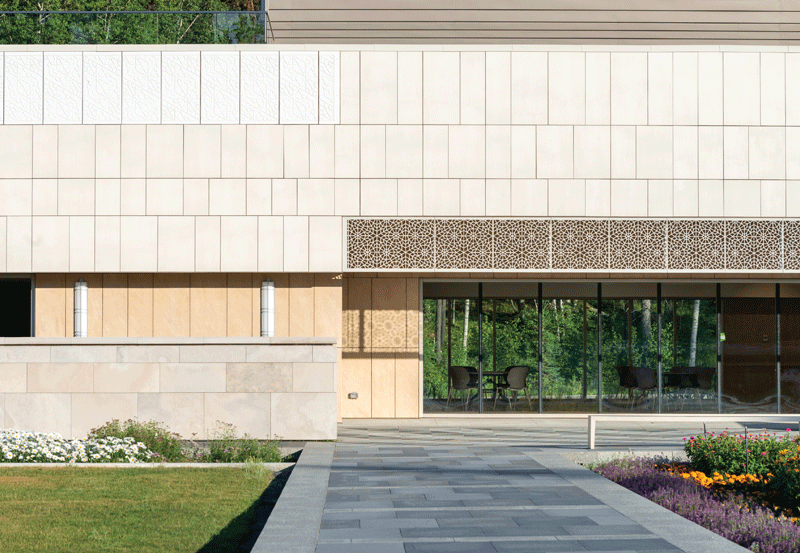
Jeff Ker, Engineered Assemblies
Facades systems have always been one of the most important parts of sustainability. We are only now coming around to realize just how important. Facades, if done properly, will be a rear ventilated rainscreen. They will be part of an outboard insulated envelope and will be high performance. In keeping with that methodology, they will then be the Primary Passive Environmental Control System.
Facades have always been on the front lines so to speak. They are often the single largest building component charged with insulation in addition to being most vulnerable to the substantial dictator – the environment.
Managing the abuse the environment delivers is a holistic endeavour and is only possible with a combination of materials, good design and proper assembly. If we had to pick one ingredient to start with, ventilation is the first. Whether you have a marginally absorbent façade material or not, ventilation is always good – never bad. It helps the entire assembly maintain a handle on moisture.
Having an active plenum, as outlined in the drawing detail, ensures the circulation of air is constant in good times and bad. The plenum can only function best when unobstructed and with the combination of adequate intake and exhaust vents.
Having adequate ventilation/air flow means the substructure supporting the façade material can see a longer lifespan and the insulation can function at its maximum potential in its dry state.
Placing a secondary drainage plane in front of the insulation (behind the plenum) will further thwart the intrusion of precipitation, minimize wind washing, and provide a visually pleasing veil to hide substructure and insulation through open joints of facade panels.
When all the components are chosen and assembled in the spirit of achieving their greatest lifespan, we can avoid premature demolition and concentrate on maximizing thermal performance and moisture management. This, in itself, is a pathway to sustainability.
The RVRS Design Guide by Engineered Assemblies is available for download in EN + FR: https://www.engineeredassemblies.com/systems.
Cladding Types – Numerous, resilient claddings are available for high-performance buildings: metal, fibre cement, ceramic, high pressure laminate, brick, masonry and precast concrete.
Most facade materials can be attached using connectors designed to minimize thermal bridging, such as the Cascadia clip, mentioned earlier, or the TcLip by Engineered Assemblies, which was recently Passive House certified.
The EQUITONE high-density fibre cement facade material is a composite of cement, cellulose and mineral materials, reinforced by a visible matrix, which can be transformed in any size or shape for crisp, monolithic details.
TONALITY is an example of a one-layer extruded ceramic in a size range of 150mm-600mm high x 2,000mm long with hidden fastener attachment in a lift and lock system for installation horizontally and vertically on facades or soffits. It can be supplied in numerous colours and shapes: grooves, waves, and random patterns, for pleasing architectural effects.
High Pressure Laminate, or phenolic consists of kraft paper, decorative paper, resins and coatings. It’s a technology that has been accomplished by many companies around the world. The manufacturers use similar materials and processes, and this technology has had a long life.
FRONTEK, from Spain-based Greco Gres Internacional, is extruded porcelain with inner and outer layers that adds a volumetric and sculptural effect to the facade. Their use on a ventilated facade system has shown FRONTEK panels to reduce outside noise and insulate against solar radiation, provide high resistance to water absorption and abrasion, and facilitate easy handling and installation with all types of facade systems because of their internal honeycomb structure.
Trespa makes a decorative high-pressure compact laminate (HPL) with an integral surface for exterior cladding which is highly weather-resistant, colour stable, impact resistant, and easy to clean. The TRESPA® Pura® NFC is made of up to 70% natural fibres which go through an advanced manufacturing process. All Pura® NFC products are certified according to PEFC™ standard.
SUBSCRIBE TO THE DIGITAL OR PRINT ISSUE OF SABMAGAZINE FOR THE FULL VERSION OF THIS ARTICLE.
